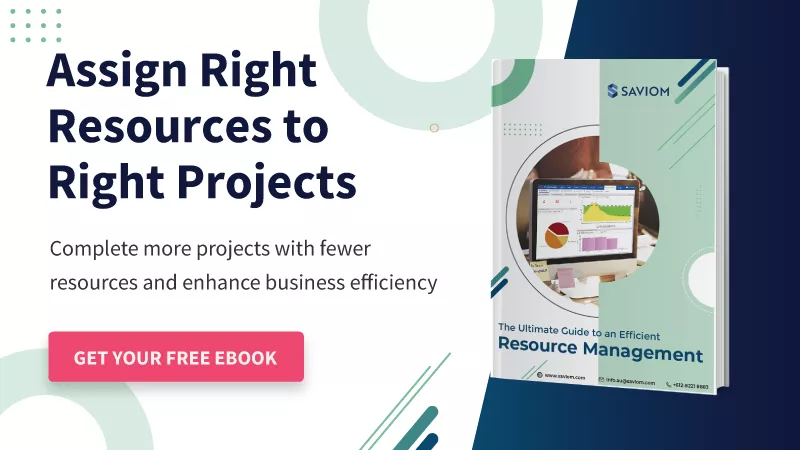Employee experience (EX)- Is it just an HR operational activity or an enterprise-wide strategy?
The upheaval in today’s business landscape has compelled organizations to address this question. Employees are no longer satisfied with increased monetary benefits or better compensation. Instead, the current workforce seeks meaning in their work, yearns for a collaborative environment where they can learn, work, and grow along with their organization.
This forms the essence of employee experience and has become an enterprise-wide initiative and not just conformed to the HR.
As a result, companies worldwide are revisiting their work policies and culture to implement changes and create an excellent EX strategy. While global giants were already on it, the pandemic onset has catalyzed it further,
A survey reveals:
More than 9 in 10 employers consider enhancing the EX a top priority for post-pandemic success.
A good employee experience management strategy is the backbone of an organization in the current times. It helps boost productivity, improve quality of work, client/customer experience and satisfaction, retention rate, and more.
This blog highlights the impact of employee experience, its constituents, and ways to improve it.
But before delving deeper, it’s important to understand:
What is employee experience?
Employee experience encompasses every interaction of an employee with the organization, right from their onboarding to their exit.
In other words,
Employee experience constitutes what an employee learns, perceives, and feels about an organization’s policies, work culture, coworkers, management, and more.
Given the basic definition of employee experience, let’s understand how it can affect an organization if neglected.
How does poor employee experience impact organizational efficiency?
Poor employee experience has a number of repercussions as below:
- A decline in employees’ engagement levels leading to lower productivity
- A rise in absenteeism rates and unplanned attrition
- Poor quality of work causing a dip in profitability and client satisfaction
All these consequences can cumulatively impact organizational efficiency. In some cases, it can also place the brand reputation in jeopardy.
Formulating a strong EX-improvement strategy can help prevent all these repercussions.
But before discussing how to do that, it is essential to understand the three main components that constitute a rich and holistic employee experience.
They are enlisted in the following section,
Read More: 11 Effective Strategies to Enhance Employee Engagement
Components of employee experience
Employers look at employee experience from three different perspectives: social, work, and organizational. When each one is catered to, it helps build a rich and holistic experience for the employees at your firm. So, it is essential to understand these three pillars before forming a definite plan:
Social experience
Social experience constitutes how an employee feels about the way the upper management and peers interact with them. It also factors in the extent of cohesiveness and collaboration among team members. In simple words, social experience is about creating a ‘humane’ environment for the workforce. If social experience is not up to the mark, it can cause conflicts, reduce team spirit, and employee disengagement.
Work experience
One of the prominent factors that define work experience is the clarity in establishing an individual’s roles and responsibilities. The other determining factor is the degree of control and autonomy an employee gets over their work. Moreover, the rewards and recognition program of the firm plays a crucial role in enriching the work experience. A poor work experience can cause ambiguity in understanding the expectations, lower productivity, which will eventually translate into sub-optimal work quality.
Organization experience
The organizational experience focuses on how well an employee’s purpose aligns with the company. It also encapsulates providing a conducive physical environment, which implies proper ergonomics, optimum lighting, ventilation, and other amenities. Moreover, the other significant factor is providing the right tool inventory to the workforce to enhance efficiency. A bad organizational experience can cause misalignment of efforts with final goals, reduce morale and productivity, and impact business profitability.
If an organization fails to do justice to any one of them, it can reduce employee satisfaction, cause unplanned absenteeism, and, in worse cases, attrition.
To prevent these repercussions, let’s gear up and form an action plan to enhance the experience. Here are some useful ways to do so:
Ways to enhance employee experience
Given the three major elements that comprise the employee experience, the onus lies on an organization to address each one of them and enhance the overall EX (employee experience) to ensure retention.
Below are a few practices to improve each component.
Tips to enhance social experience
Build a social climate to enhance the sense of belonging
Today, employer-employee relation is no longer confined to work-related discussions but goes beyond that. It’s more about expressing compassion, empathy towards the employees and taking a “humane” approach to make them feel valued and respected. Thus, it is essential for organizations to take an extra step, create a harmonious, friendly work environment, and convey how individual efforts matter and are crucial to driving a positive impact.
This will help employees appreciate that they are the real drivers of the company’s success and their contributions matter. Moreover, a welcoming environment will enhance their sense of belonging and give them a strong reason to work with 100% commitment.
Promote teamwork and collaboration
Teamwork and collaboration are crucial as they help bring different team members with varied perspectives on the same page, foster social interactions, and enable them to work cohesively towards common goals. To foster this collaborative environment, managers can promote open dialogues, group brainstorming, and problem-solving sessions and boost team spirit.
Managers should also track any instances of friction or differences between team members and eliminate them amicably. Besides that, since it is an era of remote work, employers should also organize virtual team-building activities for their distributed workforce and keep them connected to the team. It will help bring together the whole team on one platform and provide them a fair chance to understand each other better. These initiatives will help strengthen the team bond, form a cohesive work culture, thereby elevating the employees’ social experience.
Read More: 11 Ways to Improve Cross-Departmental Collaboration
Foster Diversity, Equity, and Inclusion
Glassdoor’s survey reveals:
76% of employees surveyed accept that a diverse workforce is an essential factor while evaluating companies and job offers.
Therefore, every organization should strive to maintain diversity and inclusion in the workplace. They can start by providing equal representation to people from all walks of life in the decision-making process irrespective of their community, gender, ethnicity, etc. Ensuring equal pay for people in positions with similar roles and responsibilities in different departments is also vital to remove gaps and establish payroll equity.
When employees know that the organization holds no prejudice against anyone and believes in providing fair opportunities to the deserving candidates, it automatically checks their list of ‘positive social environment’.
Another critical component is work experience.
Enlisted below are the ways to enhance it.
Tips to enhance work experience
Define roles and responsibilities clearly
Clearly established roles and responsibilities contribute significantly to increased productivity as everyone knows what’s expected of them, which helps them align their efforts better. Thus,
Functional managers should define roles and responsibilities for the employees right at the time of onboarding.
They can do so by conducting one-on-one meetings, via emails, etc.
Clarity in expectations helps the employees understand how their work adds value and is a stepping stone towards reaching the strategic goal. This creates a sense of purpose, propels them to do better, eventually elevating their work experience.
Provide autonomy to promote individual accountability
Gartner’s 2020 ReimagineHR Employee Survey reveals:
Organizations that offer work flexibility in terms of location, timings, and quantity; see 55% of their workforce as high performers.
Thus, organizations should provide flexibility in terms of working hours, liberty to opt for work from home or in-office, etc. This will allow employees to strike a work-life balance and put in their best efforts at work. Another important factor is micromanagement. When employees are constantly told what to do, they feel under-confident, and it negates any space for creativity. Thus, managers should practice autonomy in the work culture.
It lets employees know the onus lies on them to provide quality output. This, in turn, makes them more responsible, and they put in their best foot forward to do justice to the work. These practices together make an employee feel entrusted and thus add to their experience.
Acknowledge and reward accomplishments
It is imperative for every organization to identify high performers in every department and acknowledge their work and contribution. Managers can conduct timely rewards and recognition programs to applaud their exceptional performances. When the employee receives accolades in front of the team, it provides a sense of accomplishment.
It also boosts their engagement levels, and they strive to work better to contribute to organizational success. This way, when an enterprise walks the extra mile and expresses gratitude to employees for their contributions, it boosts their work experience.
Read More: Employee Recognition Programs: Types, Benefits and Best Practices
Make change and innovation a part of work culture
Change and innovation are incumbent to upscale and reach new levels of success. However, these can only be introduced when your workforce is on board. Thus, employers should establish a change management framework that will effortlessly empower resources to adopt new processes, workflows, tools, technologies, etc.
Additionally, a systematic innovation management plan promotes employees to showcase their out-of-the-box ideas that can be turned into reality. It sends a clear message to employees that their talent is appreciated, and the firm also cares about their professional development.
Integrate performance management into your work practices
Employees need a certain amount of guidance to get the tasks right and provide expected output. If something goes otherwise, managers need to convey the hiccups and help them improve further. Thus, giving proper feedback on a regular basis is imperative to ensure employees receive timely reviews and get enough leeway to course correct them.
Managers can do so by conducting one-on-ones to make the employees feel at ease. Embedding performance management at organizations helps employees feel that their professional trajectory is given due diligence. It, thus, makes their journey fulfilling at your firm.
Offer career development opportunities
As employees are valuable for the company’s success, it is essential for an organization to help them climb up the professional ladder. For this, employers must give adequate career development opportunities to the workforce. Managers can work in coordination with HR to identify and assess the training and upskilling requirements for people at different hierarchical levels. For instance, shadowing can be a good way to prepare freshers to take up bigger responsibilities and excel in their careers.
Individual development programs for higher-ups can be more focused on sharpening their current skills while acquiring new ones to diversify their portfolios. If a candidate is willing and deserving enough, management can also provide cross-skilling opportunities on a case-to-case basis. All these measures facilitate the alignment of an individual’s career goals with the company’s, engage them, and enhance their experience at the workplace.
The final component that makes up EX is organizational experience.
Following are some good ways to enhance it.
Tips to enhance organization experience
Convey the organization’s mission and vision clearly
Every organization should define its mission and vision and convey them to the new recruits right at the outset. For that, creating a great employee onboarding experience where the management walks the new employee through the company’s various aspects and work practices is essential.
Team leads, managers, and even C-level executives can also have one-on-one conversations with new hires to help them understand the core theme the company is driving. Doing this helps give a better picture of the company’s purpose to the workforce and lets them align their efforts in the right direction.
Provide the right tool inventory to enhance efficiency.
Technology-related innovations and advancements have propelled digital transformation in workplaces. So,
Enterprises should also provide the right tech inventory for their workforce to help make their work more efficient and effortless.
For instance, companies should provide video conferencing, workflow automation apps, etc., to make coordination and connectivity in real-time quick and easy.
Apart from providing general tech inventory, the management should also consider the department-specific tool requirements and fulfill them. For example, a graphic designer may require a high-resolution monitor. This way, ensuring to provide the right tech to each individual based on their role increases their work efficiency and boosts the organizational experience.
Read More: 9 Effective Tips on Enhancing Employee Performance at Work
Ensure a conducive and human-centered workplace environment
The workplace environment has a significant influence on the productivity of employees. Therefore, make sure that the physical office is optimally designed to keep employees engaged and compliant with all the safety standards. A cafeteria with bean bags can also be a good idea to let employees destress themselves during coffee breaks.
The workspace should also be properly ventilated and illuminated to prevent any productivity challenges due to such physical factors. Motivational quotes, canvas-sized photos of the company’s events and functions, etc., can also make the workspace more “human-centered”. Some MNCs also provide “nap pods” to let employees take naps during working hours and rejuvenate themselves. All these measures to humanize workspaces go a long way in elevating organizational experience.
Provide employee well-being benefits
Gartner’s survey reveals:
68% of organizations have introduced at least one new wellness benefit for employees by March 2021 to help them.
It shows the rise in the importance of providing wellbeing benefits for an organization. These benefits can be monetary, including bonuses, paid time-offs or vacations once a year, or medical insurance cover against major diseases, etc. The non-monetary well-being benefits can be stress reduction programs, timely counseling sessions, finance management tips, health screenings, nutrition classes, and more.
For remote employees, an employer can provide standing desks, conduct virtual team-building sessions, online stretch or yoga sessions, etc. When employees see that the company is investing in their well-being, it makes them feel more valued and belonged, thereby leading to a good experience.
Transform the employee journey.
Marilyn Carlson Nelson, the former CEO of Carlson Companies, says, “On what high-performing companies should be striving to create: A great place for great people to do great work.”
As EX forms the cornerstone of creating good and long-lasting bonds with employees, it plays a crucial role in the enrichment of the work culture. If an enterprise can effectively cater to its individual components, it can achieve high employee engagement and retention.
By following the above-mentioned tips and strategies, an organization can successfully enhance the overall employee experience.
So, what is your employee experience management and enhancement strategy?
The Glossary
Read More: Glossary of Resource Workforce Planning, Scheduling and Management
The Saviom Solution
SAVIOM has over 20 years of experience helping multinational clients manage their resources efficiently and effectively. With over 20 years of experience, this Australian-based MNC has a global presence across 50 countries and has helped 100+ clients meet their specific business goals. Saviom also provides tools for project portfolio management, professional service automation, and workforce planning software. So, SAVIOM can help your business to establish an efficient system geared towards your specific business challenges.












